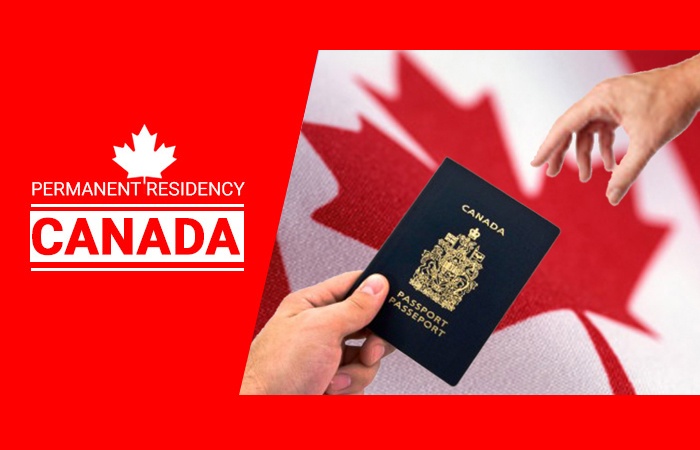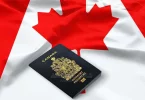Advertisements
Canada, known for its breathtaking landscapes, diverse culture, and high quality of life, attracts individuals from around the world seeking to make it their permanent home. This article serves as an extensive guide on how to apply for permanent residence in Canada. From understanding eligibility criteria to exploring various immigration programs, we will delve into the intricacies of the Canadian immigration process.
Permanent Residence in Canada
Defining permanent residence in Canada and elucidating the myriad benefits it offers, including access to healthcare, social services, and the opportunity to apply for Canadian citizenship.
Types of Permanent Residence
Permanent residence in Canada can be obtained through various immigration programs, each designed to address different needs and categories of individuals. Here are some of the main types of permanent residence options available:
Express Entry System:
Federal Skilled Worker (FSW): For skilled workers with experience in high-demand occupations.
Advertisements
Federal Skilled Trades (FST): Targets skilled tradespersons with experience in specific occupations.
Canadian Experience Class (CEC): For individuals with Canadian work experience.
Provincial Nominee Programs (PNPs):
Each province and territory in Canada has its own PNP, allowing them to nominate individuals who meet specific regional needs.
Alberta Immigrant Nominee Program (AINP), Ontario Immigrant Nominee Program (OINP), etc.
Family Class Sponsorship:
Spouse or Common-Law Partner Sponsorship: Canadian citizens and permanent residents can sponsor their spouses or partners.
Parent and Grandparent Sponsorship: Allows individuals to sponsor their parents and grandparents.
Dependent Child Sponsorship: Parents in Canada can sponsor their dependent children.
Refugee and Humanitarian Programs:
Refugee Sponsorship: Canada has programs for refugees, including government-assisted and privately sponsored refugees.
Humanitarian and Compassionate Grounds: Individuals facing exceptional circumstances may apply for permanent residence on humanitarian grounds.
Quebec-Selected Immigration Programs:
As Quebec has its own immigration system, individuals who intend to settle in Quebec need to go through the Quebec-selected immigration programs.
Business Immigration Programs:
Start-Up Visa Program: Targets entrepreneurs with the skills and potential to build businesses in Canada.
Self-Employed Persons Program: For individuals with relevant experience in cultural or athletic activities, or experience in managing a farm.
Atlantic Immigration Pilot Program (AIPP):
Operates in partnership with the Atlantic provinces of Canada to attract skilled workers and graduates to fill labor market gaps.
Rural and Northern Immigration Pilot:
A community-driven program designed to address labor market needs in rural and northern communities.
Caregiver Programs:
Home Child Care Provider Pilot and Home Support Worker Pilot: Designed for caregivers providing child care or home support to Canadians.
Agri-Food Pilot:
Targets workers in the agri-food sector, addressing labor shortages in specific occupations related to agriculture and food processing.
Agreements and Special Programs:
Some individuals may qualify for permanent residence through special agreements or programs, such as the Canada-U.S. Free Trade Agreement.
It’s important to note that each program has its own eligibility criteria, requirements, and application process. The suitability of a specific program depends on factors such as education, work experience, language proficiency, and the applicant’s specific situation. As immigration policies and programs may evolve, it’s recommended to check the official website of Immigration, Refugees and Citizenship Canada (IRCC) for the most up-to-date information.
Eligibility Criteria
Express Entry System
A detailed exploration of the Express Entry system, the points-based immigration system used to select candidates for permanent residence. This includes factors such as age, education, work experience, and language proficiency.
Provincial Nominee Programs (PNPs)
An examination of Provincial Nominee Programs, which allow provinces and territories to nominate individuals based on their skills and contributions to the local economy.
Family Sponsorship
Understanding the process and requirements for sponsoring family members for permanent residence, including spouses, children, and parents.
Refugee and Humanitarian Programs
Exploring the options available for individuals seeking asylum or refuge in Canada and the criteria for humanitarian and compassionate grounds.
Step-by-Step Application Process
Express Entry Application Process
A comprehensive guide on how to navigate the Express Entry application process, from creating an online profile to receiving an Invitation to Apply (ITA).
Provincial Nominee Programs Application Process
Breaking down the steps involved in applying for provincial nomination, including obtaining a nomination certificate and submitting an application to Immigration, Refugees and Citizenship Canada (IRCC).
Family Sponsorship Application Process
Providing a step-by-step guide for sponsoring family members, including preparing the application package, meeting financial requirements, and undergoing medical examinations.
Refugee and Humanitarian Application Process
Detailing the application process for refugees and individuals applying on humanitarian and compassionate grounds, including the necessary forms and supporting documentation.
Document Checklist and Application Fees
Required Documents
A comprehensive document checklist for various permanent residence streams, ensuring applicants are well-prepared to submit a complete application.
Application Fees
An overview of the fees associated with permanent residence applications, including processing fees, right of permanent residence fees, and biometrics fees.
Waiting Period and Application Processing Times
Understanding Processing Times
Exploring the factors that influence application processing times, including the type of application, completeness of documentation, and the volume of applications received.
Bridging Open Work Permits
An examination of bridging open work permits that allow applicants to continue working in Canada while waiting for their permanent residence application to be processed.
After Receiving Permanent Residence
Landing in Canada
Guidance on the landing process, including obtaining a Confirmation of Permanent Residence (COPR) and the importance of initial entry into Canada.
Rights and Responsibilities
An exploration of the rights and responsibilities of permanent residents in Canada, including the obligation to file taxes and the eligibility to apply for Canadian citizenship.
Common Challenges and Solutions
Overcoming Application Refusals
Application refusals can be disheartening, but understanding common reasons for refusals and implementing effective strategies to address these issues can significantly improve your chances of success. Here are insights into common reasons for application refusals and strategies to overcome challenges:
Common Reasons for Application Refusals:
1. Incomplete Documentation:
- Issue: Failure to provide all required documents or incomplete submission.
- Strategy: Carefully review the application checklist, ensuring all necessary documents are included. Seek guidance from official guidelines or consult with immigration experts if needed.
2. Failure to Meet Eligibility Criteria:
- Issue: Applicants may not meet specific eligibility criteria outlined in the immigration program.
- Strategy: Thoroughly understand the program requirements and assess your eligibility before applying. If uncertain, seek professional advice to clarify eligibility.
3. Insufficient Language Proficiency:
- Issue: Inability to meet the required language proficiency standards.
- Strategy: Prioritize language proficiency preparation. Take recognized language tests like IELTS or TEF and consider retaking the test if scores are below the required threshold. Enroll in language courses for further improvement.
4. Financial Ineligibility:
- Issue: Failure to demonstrate financial capacity or meet the required funds.
- Strategy: Clearly present financial documents and adhere to the specified requirements. Seek professional advice to ensure compliance with financial criteria.
5. Medical Inadmissibility:
- Issue: Health concerns that may render an applicant medically inadmissible.
- Strategy: Address medical concerns proactively. Obtain medical examinations from approved panel physicians and provide all necessary medical documentation.
6. Criminal Inadmissibility:
- Issue: A criminal record or involvement in activities that make an applicant criminally inadmissible.
- Strategy: Obtain legal advice to assess the impact of any criminal record. Consider applying for criminal rehabilitation if eligible. Be transparent about the situation and provide necessary documentation.
7. Misrepresentation:
- Issue: Providing false or misleading information in the application.
- Strategy: Be honest and accurate in all information provided. If there are discrepancies in previous applications, address them transparently, providing explanations and supporting documentation.
Strategies to Overcome Challenges
1. Consult with Immigration Experts:
- Seek advice from immigration consultants or lawyers who specialize in the specific immigration program you are applying for. They can provide insights, review your application, and offer guidance on potential challenges.
2. Review and Revise the Application:
- Carefully review the refusal letter to understand the specific reasons for refusal. Address each concern methodically, revise the application accordingly, and provide additional documentation if necessary.
3. Consider Appeals:
- Depending on the immigration program, some applicants may have the option to appeal a refusal decision. Understand the appeal process, including timelines and requirements. Ensure that you meet all criteria for appeal and provide compelling reasons.
4. Apply for Restoration:
- In some cases, applicants may have the option to apply for restoration within a specific period after refusal. This allows individuals to correct errors, provide missing documents, or address concerns.
5. Seek Additional Supporting Documents:
- If the refusal is due to insufficient documentation, gather additional evidence to strengthen your case. Provide any missing documents and ensure they align with program requirements.
6. Reassess Eligibility:
- Reassess your eligibility for the immigration program. If you’ve identified areas of weakness, such as language proficiency or work experience, take steps to enhance these aspects before reapplying.
7. Demonstrate Genuine Intent:
- Clearly articulate your genuine intent to comply with Canadian immigration laws. Address any concerns about your intentions in the application and during any appeal process.
8. Stay Informed:
- Stay updated on changes to immigration policies and procedures. Continuous learning about the application process and requirements will help you navigate the system more effectively.
Remember that each case is unique, and strategies may vary based on individual circumstances. Seeking professional advice and understanding the specific details of your refusal will enable you to craft a targeted and effective approach to overcome challenges and achieve success in your pursuit of permanent residence in Canada.
Navigating Language Proficiency Requirements
Meeting language proficiency requirements is a crucial aspect of the immigration process for many permanent residence programs in Canada. English and French are the official languages, and applicants are typically required to demonstrate their proficiency through standardized language tests. Here are some tips on meeting these requirements:
1. Identify Language Proficiency Requirements:
- Understand the language proficiency requirements specific to the immigration program you are applying for. Requirements may vary based on the program and the specific stream within that program.
2. Take a Recognized Language Test:
- The two most widely accepted language tests are the IELTS (International English Language Testing System) for English and the TEF (Test d’Évaluation de Français) for French.
- Familiarize yourself with the test format and content. Consider taking preparatory courses or using official practice materials.
3. Prepare Adequately for Language Tests:
- Enroll in language proficiency test preparation courses if available. Many educational institutions and language schools offer courses specifically designed to help individuals prepare for IELTS, TEF, or other language tests.
4. Practice Regularly:
- Consistent practice is key to improving language skills. Set aside dedicated time each day for listening, reading, writing, and speaking in the language you are being tested on.
5. Immerse Yourself in the Language:
- Surround yourself with the language as much as possible. Watch movies, TV shows, or listen to music in the language you are learning. Engage in conversations with native speakers, either in person or through language exchange programs online.
6. Online Language Courses:
- Explore online language courses offered by reputable platforms. Websites like Duolingo, Babbel, or Rosetta Stone provide interactive lessons that can complement your test preparation.
7. Participate in Language Exchange Programs:
- Connect with language exchange partners who are fluent in the language you are learning. Platforms like Tandem and HelloTalk facilitate language exchange opportunities where you can practice with native speakers.
8. Seek Feedback:
- Request feedback on your language proficiency from teachers, language tutors, or native speakers. Constructive feedback can help you identify areas for improvement and refine your language skills.
9. Simulate Test Conditions:
- Practice under test conditions to familiarize yourself with the timed nature of language tests. This can help reduce test-day anxiety and improve your performance.
10. Stay Informed about Changes:
- Stay updated on any changes to language proficiency requirements or accepted tests. Immigration policies can evolve, and it’s essential to be aware of the latest information.
11. Retake the Test if Necessary:
- If you don’t achieve the required language proficiency score on your first attempt, consider retaking the test after further preparation. Many applicants improve their scores with additional study and practice.
12. Use Official Resources:
- Rely on official resources provided by the testing organizations. Official IELTS and TEF materials are designed to give you an accurate representation of the test format and expectations.
Meeting language proficiency requirements is a significant milestone in your journey toward permanent residence in Canada. By investing time and effort into language preparation, you not only increase your chances of meeting the requirements but also enhance your ability to integrate successfully into Canadian society.
Conclusion
In conclusion, obtaining permanent residence in Canada is a significant milestone that opens doors to a new life filled with opportunities. This comprehensive guide has aimed to demystify the process, providing aspiring immigrants with the knowledge and tools needed to navigate the complexities of applying for permanent residence in the Great White North. From understanding eligibility criteria to completing the application process, the journey to becoming a permanent resident in Canada is both rewarding and transformative.
Advertisements


